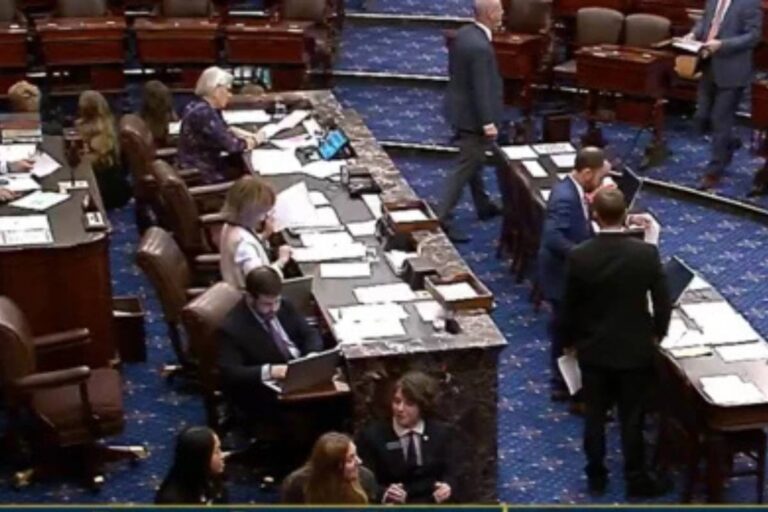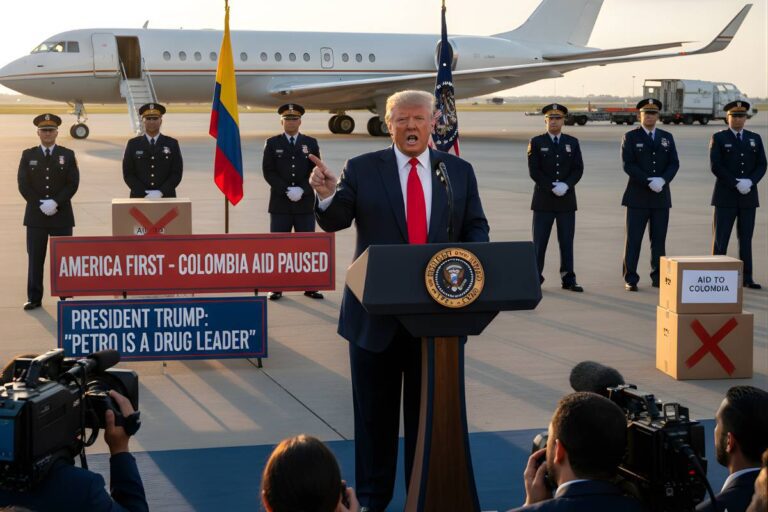There is not much certainty on precisely how US President Donald Trump’s April 2 tariff show will go down. What is certain, however, is that the promised ‘Liberation Day’ retaliatory tariffs will be announced at an open-air event in the White House’s Rose Garden, where Trump will probably declare tariffs on a country-by-country basis, instead of on sectoral terms.
The two large unknowns after that are: What these tariffs are going to look like and, more importantly, who’s going to retaliate and by how much?
If the strategy thus far by countries is anything to be believed, the model of calibrated, gradual increases on essential goods that medically affect American consumers could be a preferred template. This is particularly because these reciprocal tariffs are unlikely to be a terminus and more of a stepping stone for an grand bargain.
America’s technology exports can be targeted by Brussels
The European Union has responded to Trump’s previously announced steel and aluminum tariff increases by taxing the most important US product exports, ranging from Harley-Davidson motorcycles to bourbon. The emphasis so far, however, has been on the goods trade. What appears to have been overlooked is Washington, DC’s significant export surplus on the services front, particularly in markets like Europe. In January 2025, for example, while America’s goods trade deficit widened by $33.5 billion to $156.8 billion, its services sector saw the surplus rise by $0.2 billion to $25.4 billion.
It is a possibility that the EU might proceed with some retaliatory restrictions on digital services arriving from the US, which may potentially open a new whole front in this trade war. Bilateral trade deficits are much more than just factory products and an electronic barrage, in some punitive sense, might actually end up hurting Meta, Alphabet, and other firms that are at the center of the American innovation narrative and have driven the bull cycle in US equities over the past 12 months. A blow on these services by Brussels would be problematic for Washington, DC., as European regulators are already investigating Apple and closely examining Meta’s practices, among other leading American firms that find themselves in the regulatory firing line on the other side of the Atlantic. That might precipitate a Black Wednesday for the American stock markets, as some have forecast.
Chinese countermeasures driven by clinical targeting
Reverting tariff measures imposed on Trump’s final term, China’s countermeasures were mostly levied in the form of tariffs imposed on a broad spectrum of American exports before both sides signed a “phase one” trade accord. This time, Beijing was much more restrained and, instead, has shifted more strategically. Up to now, it has retaliated quickly on the two tranches of new 10 percent tariffs Trump introduced on Chinese imports into the US, while preparing a toolkit of alternative countermeasures.
It has singled out specifically American agricultural products, such as soybean and pork, which would hurt Trump’s agri base in America’s midwest. Soybean is the biggest farm export to China from the US.
Late last year, the Chinese government also overhauled its export controls for “dual use” items and then swiftly tightened the export of gallium, germanium, and antimony — key elements with tech and military applications.
Comparatively positive outlook for India
India looks to be in a comparatively advantageous position, though Trump has repeatedly flagged the high tariffs imposed by New Delhi. Policymakers here have made some concessions, such as on bourbon and high-end motorcycles from the Union Budget in late January onwards, but most of that has been done in a piece-meal manner and is not so much part of a complete package. That may be a problem for New Delhi, particularly from the perspective of a negotiating strategy.
What is good, however, is the news that a day before the US retaliatory tariffs are set to kick in, India has accepted the Terms of Reference (ToR) for the Bilateral Trade Agreement with America. The ToR defines the contours of the BTA suggested between the two nations, and puts the ball in motion for a bilateral agreement. The finalization of the Terms of Reference was yet to happen on Saturday when American negotiators departed from India following four days of negotiations. The two countries are now technically ready for actual talks where India would reduce tariffs on US goods in return for concessions by America.





















